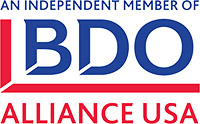
By Mike Conover
“Is there something I can read that describes our compensation program?”
Numerous organizations invite new individuals to get involved in the administration of their executive compensation program or hire new executives with a desire to know more about the program. This question is asked many times and often the answer is no.
Every year, we consult with members of many nonprofit boards as they address the annual compensation decisions for their organizations’ senior executive positions. In some cases, these are first-time projects and others are relationships that have spanned several years. There is a considerable range in the size of these organizations and the scope of services they offer. As you might expect, there is a similar range of experience and knowledge with pay-related matters among the board members we serve.
Somewhat surprisingly, the governance and administrative practices for board management of compensation are sometimes not as well developed as the size of the organization would suggest. A significant number of organizations have a rudimentary process in place with not much more than the calendar and the checkboxes on Form 990 and Schedule J guiding compensation decisions for the leadership team. Solely getting through the chief executive officer (CEO) / executive director’s annual pay discussion and completion of the IRS forms seem to be the focal points of the board’s attention to compensation.
I am not suggesting the absence of a robust process means that pay-related matters are not getting the board’s attention. In most cases they are but often without the benefit of a formal compensation program and its processes to guide them. In these cases, a process of sorts takes shape based on the particular issue that needs to be addressed or the individuals who happen to be involved in addressing it.
This can lead to a variety of situations that frustrate board members and executives alike, for example:
- Questions are raised about the size, type, performance or location of organizations used for competitive pay comparisons.
- Similar concerns arise about the type of external benchmark position used for competitive comparisons.
- Confusion may arise about the authority of the board versus the chief executive to make a pay decision for a particular position.
- There may be difficulty arriving at a consensus about the positioning of pay level for the organization in relation to the range of competitive pay (e.g., median, 75th percentile, etc.) and how it is achieved (e.g., salary only, salary plus bonus, etc.).
Individuals joining the compensation decision-making process for the first time often find themselves struggling to “catch up” with the group and understand the issues involved. Individuals experienced with the ad hoc approach sometimes become exasperated with the absence of any guidelines and lengthy deliberations to arrive at a consensus on a particular issue. As one board member told me: “We have a compensation policy. We develop a new one every time we meet!”
There is a downside to this lack of a defined compensation policy and process more serious than suboptimal use of board members’ time. We see instances where compensation decision-making goes off track. This puts the organization and all parties at risk. In some instances, a problem was created inadvertently. A well-intentioned desire to “do something nice” for a long-tenured executive, a large salary adjustment, or the adoption of a trendy new component for the executive’s compensation plan may create the problem. In some cases, a tally of all components of the compensation program for an executive has never been made. The total compensation could be alarming. Excessive pay, or pay that appears excessive, can create reputational and / or regulatory risk for the organization.
The opposite situation also occurs. In their efforts to be conservative, good stewards of the organization’s resources, compensation may fall far enough below competitive levels that the organization cannot retain or recruit qualified personnel for critical roles. Paying too little can also be problematic.
Of course, the examples I have cited are the more extreme ones. Most organizations do manage to handle executive compensation satisfactorily. What I am suggesting is that there’s a better way for almost every type of nonprofit organization to manage compensation for its executives.
A formal executive compensation program is the resolution. Some may call it compensation philosophy, pay strategy or guiding principles. A formal compensation program is a comprehensive collection of answers to all the key questions and issues about executive pay. The most effective programs are developed by, and tailored to, your organization. The topics covered in a formal compensation program are fairly standard, and the detailed contents require specific input based on your organization’s needs and beliefs about pay.
Key sections of a formal compensation policy and some of the topics within them often include the following:
Program Governance
- Identification of program participants including board, compensation committee, chief executive officer and outside advisor(s)
- Table of responsibilities and authorities
- Calendar of activities
Guiding Principles and Program Considerations
- Overall role of total rewards program
- Relevant competitive marketplace(s)
- Sources and uses of competitive information
- Regulatory compliance
Program Characteristics
- Overall competitive positioning goal
- Guiding principles, for example:
- Emphasis on team in relation to individual results.
- Support of shorter results in relation to longer-term results.
- Compensation ranges and management of individual’s compensation within ranges
- Communication of compensation information
Program Components and Their Roles
- Pay components
- Benefit components
- Perquisites
The four broad sections of a formal program discussed above cover most of the issues and questions that routinely arise in administering compensation. The benefit of the formal compensation program is realized because key topics have been addressed in a comprehensive and coordinated manner. All parties in the process know their respective roles and have established policies and processes to guide them. New participants can quickly get acquainted with the program, and the number of future meetings or situations devoted to ad hoc decisions is virtually eliminated. Board and compensation committee members and management involved with compensation follow a schedule of meetings with each devoted to an area of the program’s governance and administration. Necessary preparatory materials are sent in advance of each meeting. Participants understand the expected objective for each meeting.
The process for creating a program begins with the thoughtful development of a series of broad policy positions for the organization’s compensation. Some organizations take shortcuts. They adopt glib generalities as their pay principles (e.g., “above average,” ”… able to recruit, motivate and retain…,” ”…competitive within our industry…,” ”pay for performance,” etc.) Others “borrow” programs from organizations.
The development process is straightforward. Potential policy positions covering broad program areas are explored, alternatives are examined, and a final position is then adopted by the organization’s leadership. Once established, each policy is then further developed with plans and processes used to implement it. A series of well-structured work sessions can complete the process in three or four work sessions. They are designed to methodically engage program stakeholders in key decisions that will define the specifics of their organization’s compensation program. The time and attention devoted to development of a compensation program tailored to the specific needs of the organization will determine its usefulness.
Is it time for your organization to develop a formal compensation program?
Written by Mike Conover. Copyright © 2022 BDO USA, LLP. All rights reserved. www.bdo.com




